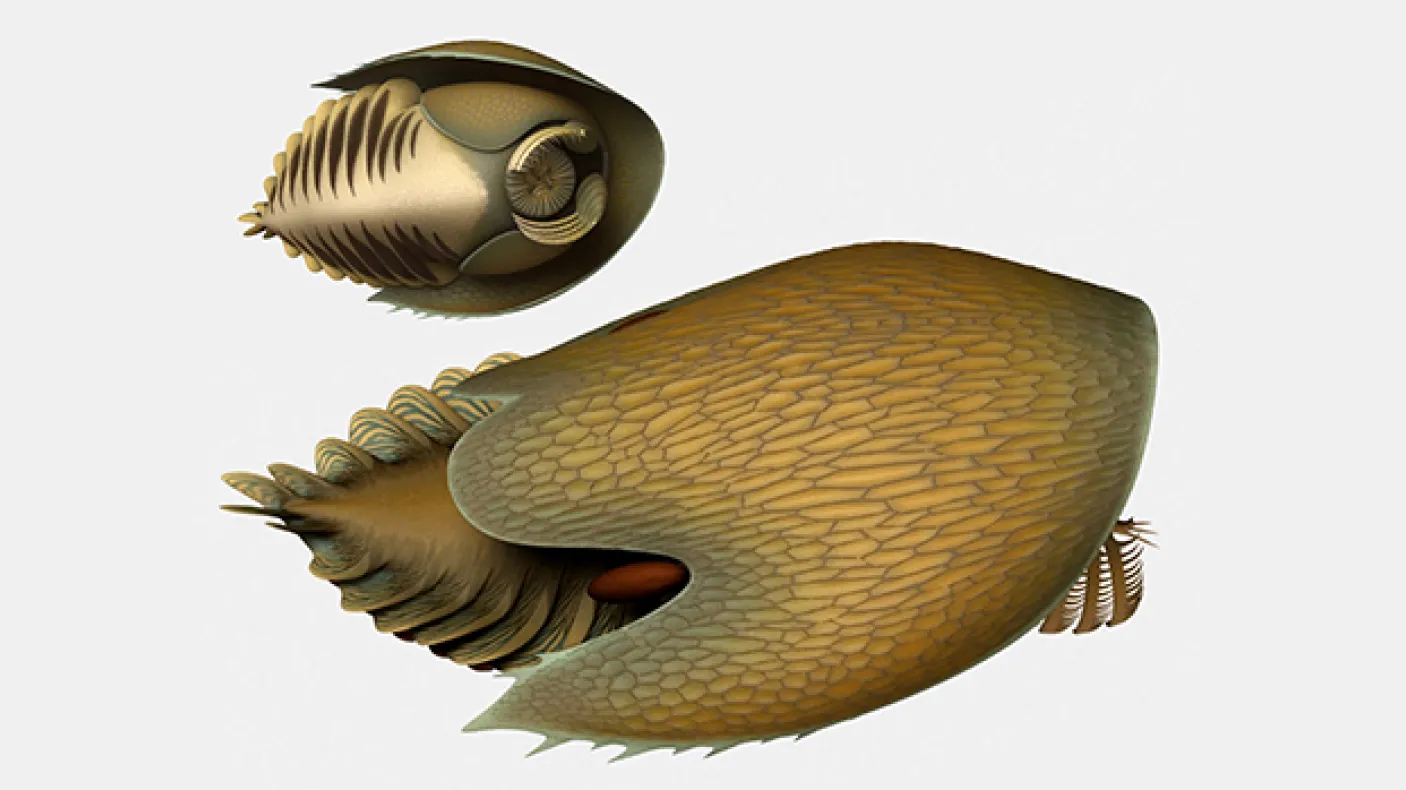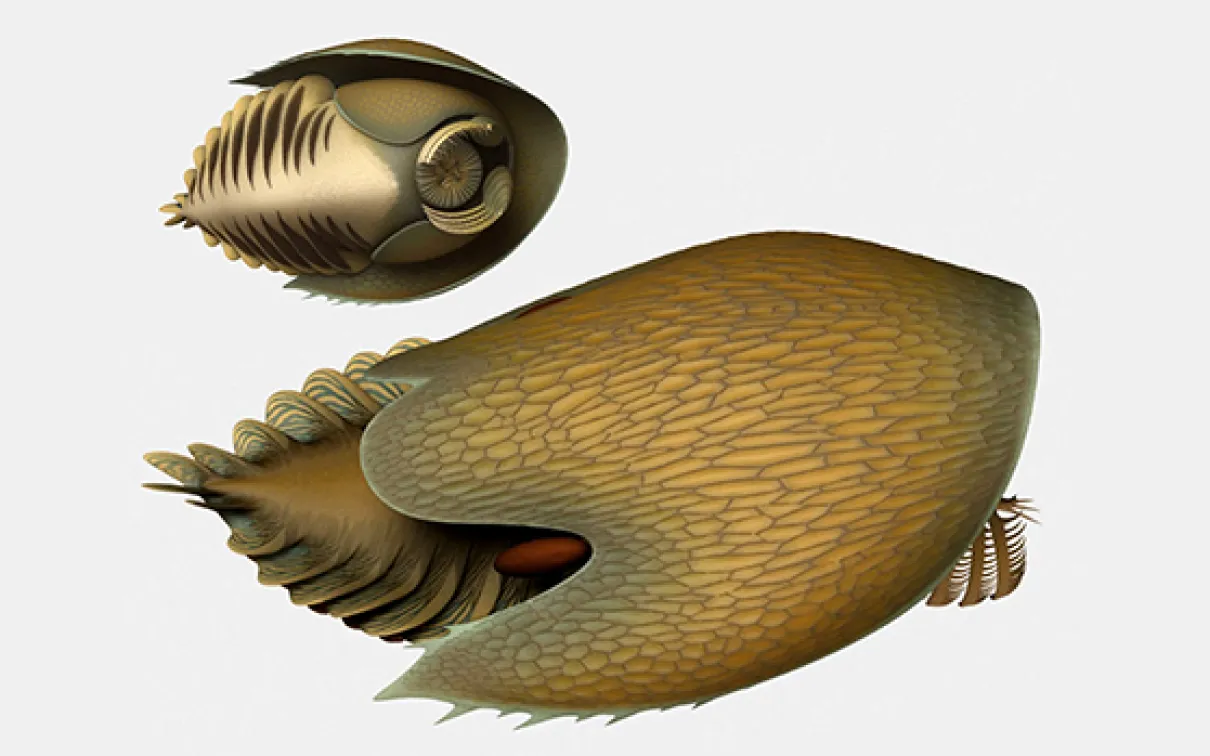Huge cache of fossils from the Burgess Shale reveal a new species of large predator
Published
Categories
Author
Blog Post
Joe Moysiuk – Phd Student & Vanier Scholar, Royal Ontario Museum & University of Toronto
We recently unveiled fossils of a new large predatory species in a paper in Proceedings of the Royal Society B. This animal had rake-like claws and a pineapple-slice-shaped mouth at the front of an enormous head, and it sheds light on the diversity of the earliest relatives of insects, crabs, spiders, and their kin. Fossils come from the half-a-billion-year-old Burgess Shale of Kootenay National Park in the Canadian Rockies.
The huge head of the new species was covered by a plate-like carapace while the short body was fringed along its sides by multiple sets of swimming flaps. A pair of large eyes protrude from notches at the rear of the carapace. The shape of the head carapace is truly bizarre. We were struck by its resemblance to the shape of the Millennium Falcon spaceship during fieldwork, and so we thought it only fitting to build that into the second part of its formal name - Cambroraster falcatus!
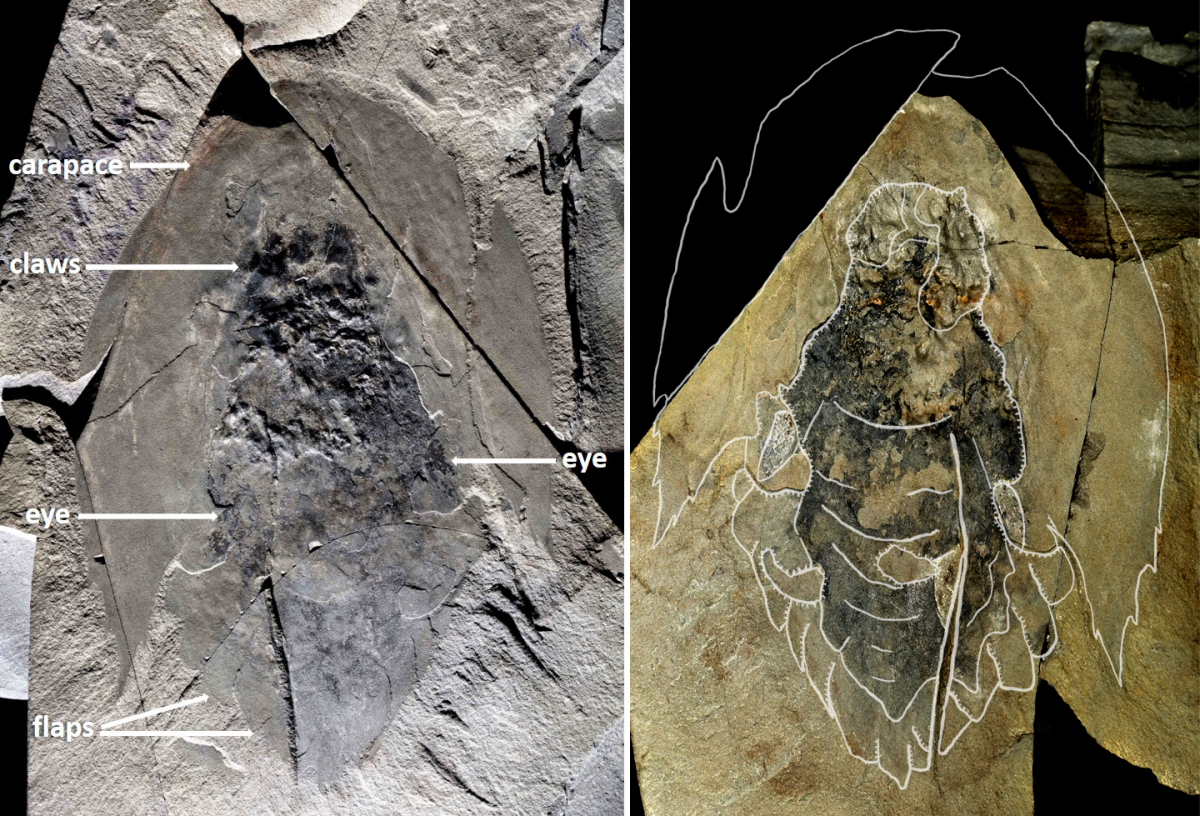
At the front of the body are a pair of large claws with a series of parallel outgrowths that look like a series of rakes. We think Cambroraster would have used these claws to trap prey that it uncovered in the mud on the sea floor. Surrounding Cambroraster’s circular mouth are a frightening array of toothed plates which it would have used to tear up prey.
Cambroraster is a member of an extinct group of animals known as radiodonts, which also includes the iconic Anomalocaris. Relatives of Cambroraster are usually only known from fragmentary remains; we may find an isolated claw here, a mouth structure there. This can make it difficult to understand these animals as a whole. With Cambroraster we have all parts preserved, and we have specimens showing how different body parts articulated with each other. Cambroraster therefore gives us important insight into what radiodonts looked like and how they functioned as living organisms.
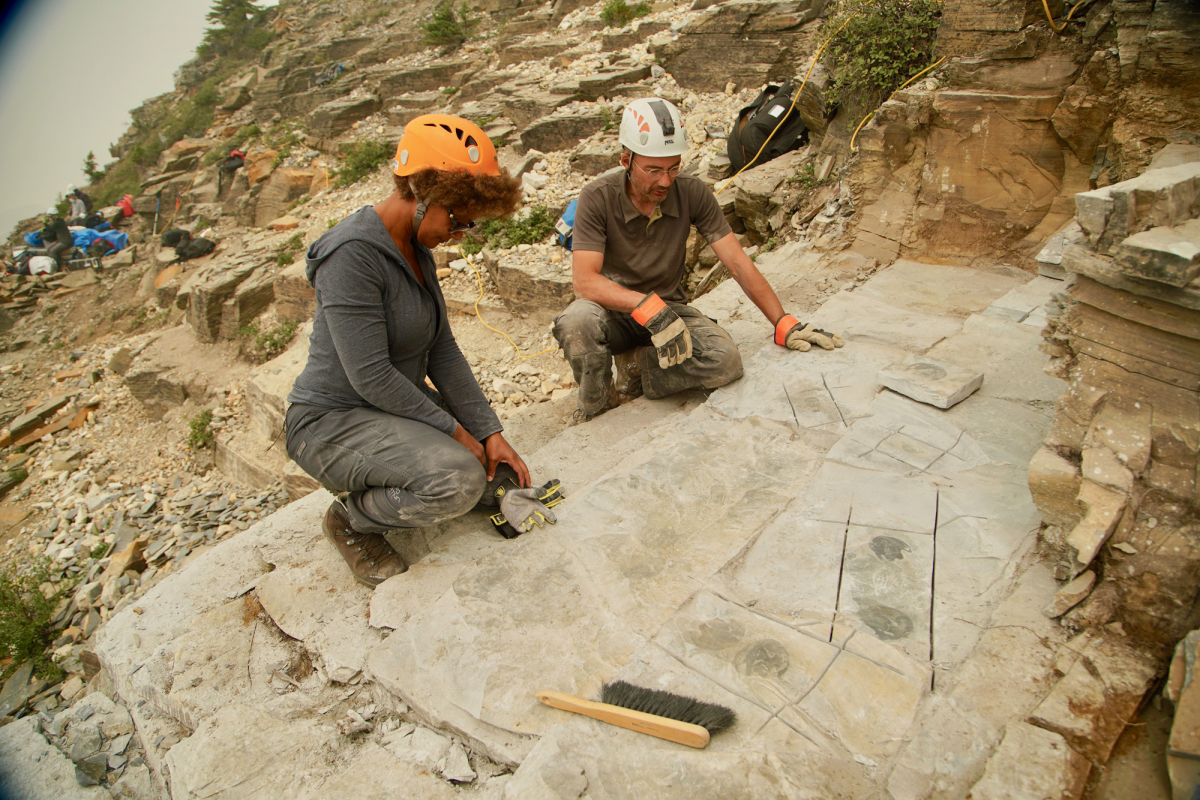
Also surprising is the abundance of Cambroraster. In some cases we found dozens of fossils on individual shale surfaces, suggesting that all of these remains were buried together. Food must have been plentiful to sustain these numbers of predators. That said, Cambroraster may not have been congregating for feeding. Based on the configurations of body parts, we think that many of the fossils likely represent moulted exoskeletons of these arthropods, cast off as they grew larger. Perhaps these Cambroraster were coming together to moult as a group, like some modern arthropods do.
Cambroraster lived in the seas during the Cambrian period, about 506 million years ago. The area was brimming with life, from early fish and diverse worms to shrimp-like species and bizarre conical shelled animals. All of the organisms were buried in mudslides, preserving them in exquisite detail.
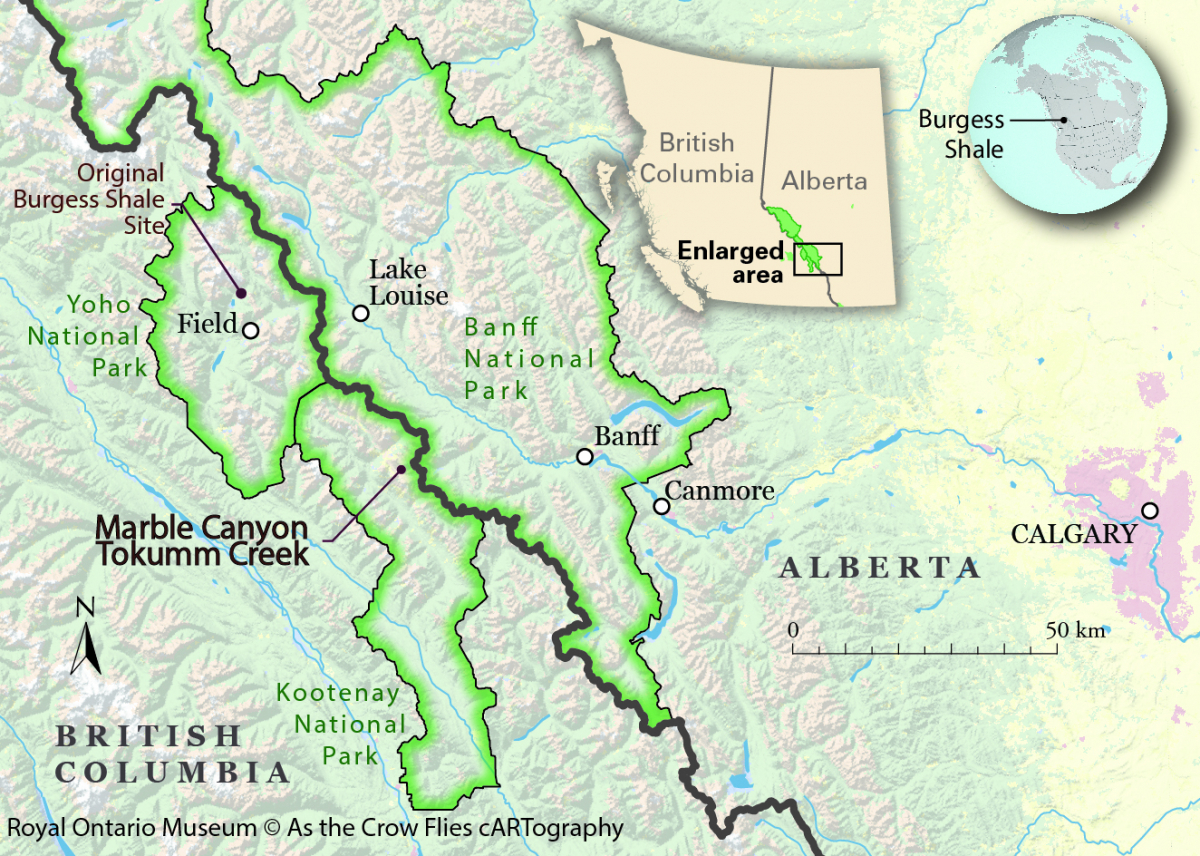
The fossil discoveries were made at new sites close to Marble Canyon in Kootenay National Park (under successive Collections and Research Permits from Parks Canada), about 40 km away from the original Burgess localities in Yoho National Park that have been known to science for over 100 years. Since the discovery of the Marble Canyon fossils in 2012, a number of new species have been described, and many more remain to come. Further, exploration in Kootenay National Park has revealed massive stretches of outcrop that are rich in fossils, which should give us an unparalleled glimpse of how the community of organisms varied through space and time.
Select fossils of Cambroraster, showcasing its various body parts, are now on display in the New Research case within the current temporary Willner Madge Gallery, Dawn of Life Preview exhibition, on the second floor of the ROM.
